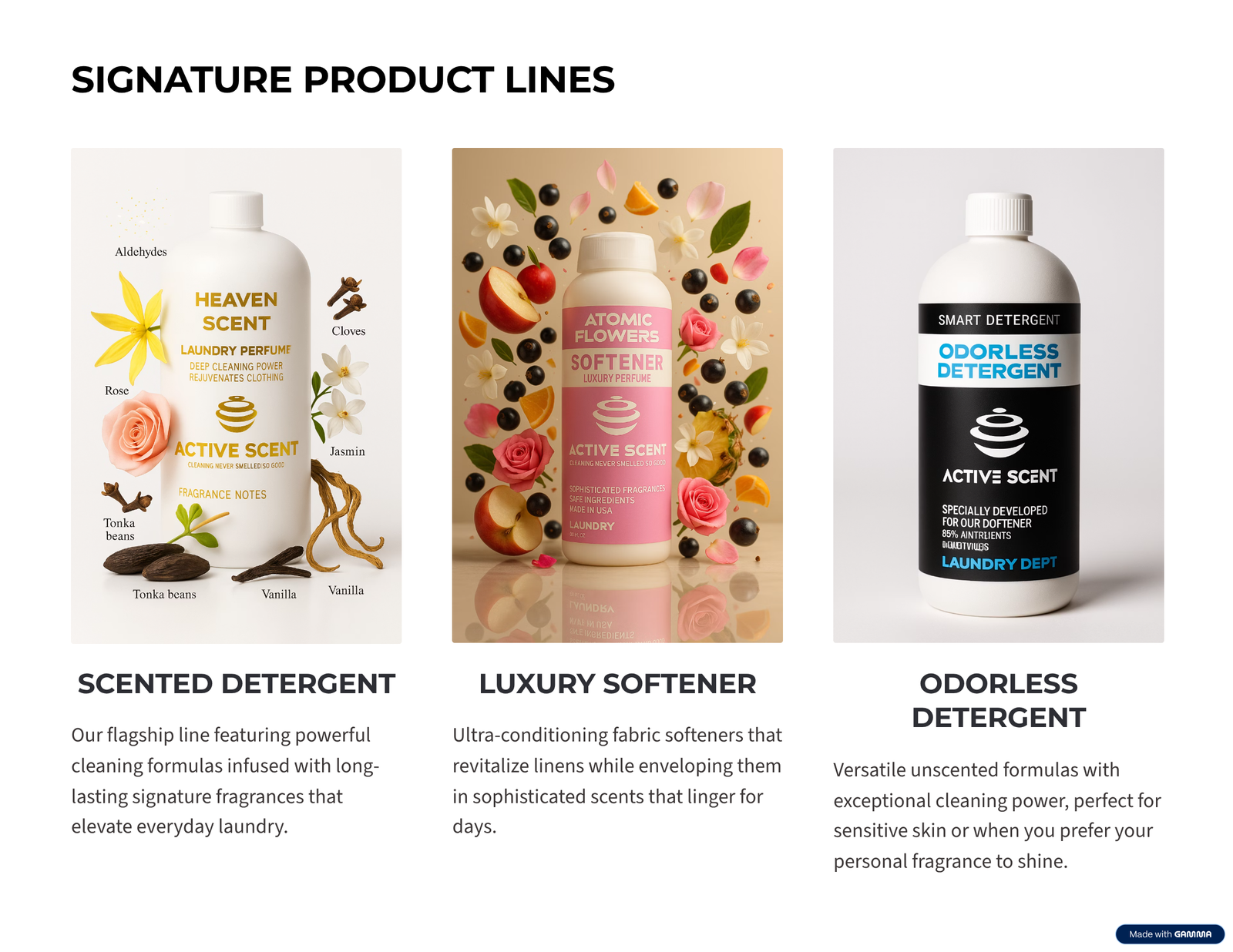
How to Launder Viscose Without Shrinking
When it comes to viscose, a gentle touch isn't just a suggestion—it's a requirement. This fabric has a tendency to weaken dramatically when it gets wet, so how you launder it makes all the difference. The golden rule? Stick to cold water under 30°C (86°F), a delicate cycle with the lowest spin possible, and a detergent designed for sensitive fabrics.
For those truly special pieces, though, nothing beats hand washing. It’s the absolute best way to preserve that signature softness and drape you fell in love with.
Understanding How to Launder Viscose
Viscose is one of those fabrics that feels like pure luxury. Known for its silk-like texture and elegant flow, it’s the go-to for everything from breezy blouses to stunning dresses. But that delicate beauty demands a little extra attention on laundry day. Unlike tough cotton or resilient polyester, viscose undergoes a major personality change the moment it hits the water.
The biggest challenge is that viscose fibers can lose a massive amount of strength once they’re soaked. This newfound vulnerability makes them prone to stretching, shrinking, or even tearing if you're not careful. The secret to success is minimizing stress on the fabric from the moment you start. That means no high heat, no harsh chemicals, and absolutely no aggressive machine cycles.
Choosing the Right Washing Method
You've really got two paths here: hand washing or machine washing. While both can work if you follow the rules, one is the clear winner for keeping your clothes in pristine condition.
- Hand Washing (The Gold Standard): Without a doubt, this is the safest route for cleaning viscose. It puts you in total control, ensuring the fabric is never twisted, stretched, or agitated too much. It's my non-negotiable method for delicate or treasured items.
- Machine Washing (A Viable Alternative): If you're pressed for time, the machine is an option—but you have to be strategic. You must use the gentlest cycle your machine offers. Look for settings like "Hand Wash," "Delicates," or "Wool."
To help you decide, here's a quick breakdown of how the two methods stack up.
Viscose Washing At a Glance: Hand vs. Machine
This table offers a quick comparison to help you choose the best washing method for your viscose garments, highlighting the key settings and why one method is often preferred over the other.
| Feature | Hand Washing (Recommended) | Machine Washing (Use with Caution) |
|---|---|---|
| Water Temp | Cold water (below 30°C / 86°F) | Cold water ONLY (below 30°C / 86°F) |
| Agitation | Gentle squeezing and swirling; full manual control | Minimal; must use "Delicate" or "Hand Wash" cycle |
| Spin Cycle | None; gently press out water | Lowest possible spin speed to reduce stretching |
| Risk of Damage | Very low; ideal for preserving fabric integrity | Higher; risk of stretching, snagging, or shrinking if settings aren't perfect |
| Best For | Delicate items, favorite pieces, and anything you cherish | Sturdier viscose blends or when you're short on time, but always with a mesh laundry bag |
Ultimately, while the machine can work in a pinch, hand washing will always be the superior choice for extending the life and beauty of your viscose clothing.
Selecting Your Laundry Essentials
The products you choose are just as critical as your washing technique. A standard, heavy-duty detergent is far too aggressive for viscose fibers. Active Scent's odor-free laundry detergent has been carefully formulated for a deep and effective clean, without competing fragrances. It's the ultimate neutral base, created to perfectly complement our range of luxury scented fabric softeners. Powerful cleaning. Zero interference.
This is also your moment to introduce a touch of luxury. Inspired by the spirit of iconic French houses like Dior, Mugler, Chanel, and Le Labo, our fragrances are bold, mysterious, hypnotic, and unforgettable olfactory statements. Deep, earthy patchouli fuses with the burning radiance of amber, while fiery pimento berries ignite the composition with spice and warmth. The fragrance is enveloped in the creamy depth of tonka bean and rich guaiac wood, while a touch of styrax adds a smoky elegance. LAUNDRY NEVER SMELLED SO GOOD!
To maintain the integrity and feel of your most cherished pieces, from designer silk to everyday viscose, always treat them with the care they deserve. Properly washing delicate fabrics is a skill that extends the life of your entire wardrobe.
If you’re dealing with larger items like home textiles, professional cleaning is often the smartest choice. For example, knowing the best practices for rug dry cleaning for delicate materials like viscose can be a lifesaver. These principles of gentle care are universal. For more expert tips that apply to all your high-end garments, check out our comprehensive guide on https://active-scent.com/how-to-wash-designer-clothes/.
Drying Viscose To Prevent Stretching and Wrinkles
Getting your viscose clean is really only half the battle. The drying stage is where you truly lock in the fabric’s shape, prevent wrinkles, and preserve that luxurious, silky feel.
Here’s the single most important rule: never put viscose in a machine dryer. The intense, direct heat is its absolute worst enemy. It will cause those delicate fibers to shrink, stiffen, and completely lose their signature drape. It's a mistake you only make once.
This means air-drying is the only way to go. But before you hang anything up, you need to get the excess water out—the right way. Viscose is at its most fragile when it's wet, so aggressively twisting or wringing it out can permanently stretch and damage the fibers.
The Gentle Towel Roll Method
Instead of wringing, the pros use a simple 'towel roll' technique. It’s a game-changer for gently blotting away moisture without putting any stress on the fabric.
Here’s how you do it:
- Lay a clean, thick towel flat on the floor or another waterproof surface.
- Place your damp viscose garment on top, smoothing out any big wrinkles.
- Starting at one end, gently roll the towel and the garment up together, like a jelly roll.
- Press down firmly on the rolled-up towel to let it absorb the water. Don't twist it.
- Carefully unroll everything. Your garment should now be damp, not sopping wet.
This quick step makes a huge difference, preventing the fabric from getting pulled out of shape by its own weight when you hang it.
Finding the Best Drying Setup
With the excess water gone, you have two great options for air-drying. The one you choose really depends on the weight and style of the garment.
- Laying It Flat: This is the gold standard for heavier pieces, like knit sweaters or viscose-blend cardigans. Popping the garment on a flat mesh drying rack gives you perfect airflow all around and completely eliminates the risk of gravity stretching out the shoulders or hem.
- Hanging with Care: Lighter items like blouses, dresses, or camisoles are fine to hang. But please, use padded or wide-shouldered hangers. This prevents those weird, misshapen bumps from forming in the fabric. Thin wire hangers are a definite no—they will almost certainly leave marks.
Before you walk away, take a moment to gently reshape the garment. Smooth out the collar, make sure the seams are straight, and pull the hem into place. This little bit of prep ensures it dries in its intended shape and makes ironing so much easier later.
Proper drying is everything for longevity. In fact, careful air-drying is the best way to avoid wrinkles and shrinkage, as tumble drying can slash the fabric’s lifespan by up to 40%. You can learn more about the material's durability by exploring insights from the viscose staple fiber market.
Choosing the right drying technique is a small investment of your time, but it delivers a huge return by keeping your viscose pieces looking flawless, wash after wash.
Solving Common Viscose Laundry Problems
Even when you follow every rule, laundry can sometimes throw you a curveball. Viscose is a stunning fabric, but it has its moments. Knowing how to troubleshoot the common issues is the real secret to keeping your favorite pieces looking brand new.
Think of this as your go-to guide for those real-world laundry mishaps. From a surprise stain to a sweater that's suddenly a size too small, a few simple tricks can save the day. The key is always to act fast and stay gentle.
Tackling Unexpected Stains
Finding a stain on your best viscose top is frustrating, but whatever you do, don't panic and start scrubbing. That’s the fastest way to ruin the delicate fibers, especially when they're wet. Aggressive rubbing will leave you with a fuzzy, damaged patch that’s far worse than the original spot.
Instead, a gentle approach is your best friend.
- Blot, Never Rub: Grab a clean, damp cloth and gently blot the stain, working from the outside edges inward. This keeps the stain contained instead of spreading it further.
- Pick a Gentle Solution: Dab a tiny amount of a pH-neutral, enzyme-based stain remover on the area. Always do a quick patch test on an inside seam first to be safe.
- Give It a Moment: Let the remover sit for a few minutes to break down the stain before you move on to hand-washing in cool water.
And for those lingering odors from a tough workout? The same rules apply—be gentle but thorough. We break down exactly https://active-scent.com/how-to-get-smell-out-of-workout-clothes/ in our dedicated guide.
Rescuing a Shrunken Garment
It’s that sinking feeling every viscose owner knows: pulling a beloved piece from the wash, only to realize it's shrunk. High heat is almost always the villain here, but don't give up hope. You can often relax the fibers back into shape.
The secret weapon for un-shrinking viscose is probably already in your bathroom: hair conditioner. It works on fabric fibers just like it does on hair, softening and relaxing them so they can be gently stretched.
To mount a rescue mission, fill a basin with lukewarm water and mix in a tablespoon of any gentle hair conditioner. Let the shrunken garment soak for about 30 minutes. Afterward, gently squeeze the excess water out—don't wring or rinse it—and use the towel-rolling trick to get it damp, not dripping. Lay it flat and carefully reshape it, stretching it back to its original size as it air-dries.
Mastering the Art of Ironing Viscose
Wrinkles are just a part of life with viscose, but smoothing them out requires the right touch. The wrong ironing technique can scorch the fabric, create an ugly shine, or even melt the fibers entirely.
For safe ironing, these three rules are non-negotiable:
- Low Heat is Law: Always set your iron to its lowest temperature, typically the "silk" setting. Anything hotter is a recipe for disaster.
- Turn It Inside-Out: Ironing viscose garments inside-out is a must. This protects the visible surface from direct heat and prevents that dreaded shiny finish.
- Use a Pressing Cloth: A simple barrier, like a clean cotton tea towel, placed between the iron and your garment distributes the heat evenly and adds a crucial layer of protection.
Understanding these fixes is key to making your clothes last. It's always a good idea to know the most common mistakes in fabric cleaning, as these principles can save any delicate textile from an untimely end.
Pro Tips for Long-Lasting Viscose Garments
Perfecting your wash routine is a huge win, but the real secret to keeping your viscose beautiful lies in what happens between washes. The way you store, wear, and care for your garments day-to-day is just as critical for preserving their shape, softness, and luxurious feel.
These are the strategies that turn simple maintenance into a ritual, protecting the pieces you love and making them last for years. It all begins with rethinking how your clothes live when you’re not wearing them.
Master the Art of Storage
Never underestimate the power of a good hanger. Tossing a delicate viscose dress onto a flimsy wire hanger is a recipe for disaster—it’s the fastest way to get those permanent, unsightly bumps in the shoulders.
Instead, invest in storage that truly supports the fabric.
- Padded Hangers Are a Must: Always hang your viscose blouses, dresses, and shirts on wide, padded, or flocked hangers. This simple swap distributes the weight evenly, preventing the fabric from stretching and distorting over time.
- Give Your Clothes Room to Breathe: An overstuffed closet is bad news. Good air circulation is key to preventing moisture buildup, which can lead to musty odors and even mildew on natural fibers like viscose.
- Fold Heavier Knits: For anything with significant weight, like a viscose sweater, folding is always the better choice. Lay these pieces flat in a drawer to keep gravity from pulling them out of shape.
Wash Less, Air More
One of the best things you can do for your viscose is surprisingly simple: wash it less. Even the most delicate cycle causes wear and tear over time.
For pieces that have only been lightly worn, just air them out. Hang the garment in a well-ventilated space for a day, and you'll be amazed at how it refreshes itself. Any minor odors dissipate, and the fabric bounces back without the stress of a full wash.
This is where a truly exquisite fabric softener makes all the difference.
When you do wash your garments, using a beautifully scented softener leaves them with a fresh, hypnotic fragrance that lasts. This makes the "airing out" strategy even more effective, keeping your clothes smelling incredible between washes.
At Active Scent, our lead perfumer and aroma designer masterfully master light and shadow, creating scents that are as enigmatic as they are energetic and refreshing. Inspired by the luxurious complexity of raw materials, we use premium, avant-garde, and sometimes exotic ingredients to olfactorily capture the essence of contemporary individuality. Each fragrance is composed of natural and ethically sourced ingredients, offering a refined and distinguished sensory experience. Learn more about our approach to luxury fragrance.
Address Small Repairs Immediately
Don't let a tiny flaw become a major problem. A small snag or a loose thread might seem like nothing, but on a delicate fabric like viscose, it can quickly unravel into a noticeable hole.
Keep a small sewing kit handy for those quick fixes. Taking a few moments to snip a stray thread or reinforce a button can dramatically extend the life of your favorite pieces, ensuring they remain staples in your wardrobe season after season.
Why Does Proper Viscose Care Even Matter?
Let's be honest, taking a little extra time with your viscose garments pays off in a big way—for your wardrobe, your wallet, and the planet. This isn't just about chores; it's a small ritual that preserves the clothes you love, keeping them beautiful and wearable for years to come.
When you extend the life of your clothes, you naturally buy less. That simple shift has a real impact, both financially and environmentally.
Preserving The Beauty and Feel You Paid For
Proper care is also about aesthetics. Let's face it, you probably bought that viscose piece for its vibrant color, silky feel, and elegant drape. Well-maintained viscose keeps all of that intact.
When your clothes look and feel incredible, you feel more confident. With Active-Scent.com, each product delivers a spark of joy, a touch of boldness, and a surge of confidence, all wrapped up in a powerful and EXCEPTIONAL product. Laundry transforms from a mundane task into a quiet act of self-care.
The link between garment care and longevity is undeniable. By adopting better laundering habits, you’re not just cleaning fabric—you’re actively investing in the lifespan and beauty of your wardrobe.
Understanding the unique needs of each fabric is key. For a broader look at maintaining all your textiles, it’s worth consulting a comprehensive fabric care guide.
The Sustainable Impact of Smart Laundry
This mindful approach to laundry creates a ripple effect. It can extend a garment's life by up to two years and contributes to a 15% reduction in textile waste associated with viscose fibers globally. Your laundry habits really do play a role in sustainability.
This is where every detail counts, right down to the products you choose. Using a powerful, odor-free detergent from Active Scent gives you a deep, satisfying clean without any harshness, creating the perfect neutral canvas.
When you pair it with a luxury fabric softener, your viscose not only looks impeccable but carries a sophisticated, lasting scent. Find more tips in our guide on how to keep clothes smelling fresh.
A Few Final Viscose Care Questions
Still have a few lingering questions about washing your viscose pieces? You’re not alone. Here are some quick, direct answers to the most common things people ask when they start caring for this beautiful—but tricky—fabric.
Can I Use Fabric Softener on Viscose?
Absolutely. In fact, a good fabric softener can make your viscose feel even more luxurious while leaving behind a beautiful, lasting scent.
The key is to choose a high-quality, gentle softener designed for delicates, like those from Active Scent. These won't leave behind the heavy, waxy residues that can weigh down fine fibers. Just be sure to add it during the final rinse cycle, never pouring it straight onto the fabric. For more tips on getting that perfect, lasting fragrance, check out our guide on how to make laundry smell good.
What Happens If I Accidentally Tumble Dry Viscose?
This is the one mistake you really want to avoid. Putting viscose in a machine dryer, especially with any heat, is a recipe for disaster. The heat and tumbling action almost always cause irreversible shrinkage. It can also make the fabric feel stiff and brittle, ruining its signature silky drape.
If you catch it immediately and the damage seems minimal, you might have a shot at salvaging it with the hair conditioner trick we mentioned earlier. But honestly, prevention is your best friend here. Always, always air-dry.
Is Viscose the Same as Rayon?
Think of it this way: viscose is a type of rayon. They're both made from regenerated cellulose, which means they come from the same family and share a lot of the same characteristics.
Most importantly, they both tend to get weaker when wet and are very prone to shrinking in high heat.
The Good News: The care routine we've laid out for viscose works perfectly for other rayon fabrics like modal. So you can use these same steps for many of the soft, silky garments hanging in your closet.
Elevate your laundry ritual with Active Scent, where POWERFUL DETERGENTS FUSED WITH LUXURIOUS FRAGRANCES. Discover the collection and transform your laundry experience at https://active-scent.com.










